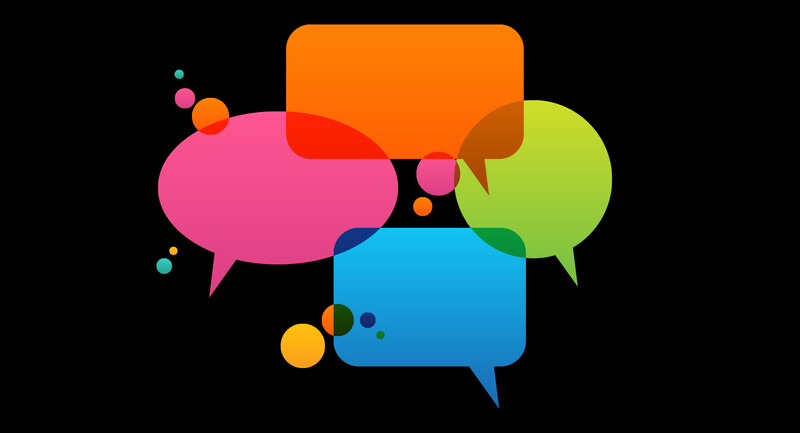Somehow, it has all gone wrong. Your feistiest students are at each other's throats, while classmates look at the fracas and back to you with eyes that plead, "Do something!" Just 10 minutes ago, the class was discussing a juicy book passage or a complex current event. Five minutes ago, against your better judgement, you'd called on that outspoken kid who then said something her classmate did not appreciate. Battle lines were drawn quickly. Thirty seconds ago, flailing for a toehold, you'd threatened discipline that you had no intention of meting out and tried to "table" the incendiary conversation. Or, you'd weighed in on the side you personally agreed with, hoping to squash the conflict with the force of your authority. Nothing worked. Now, the lesson is ruined, and there are still 20 minutes left in class!
Unpredictable Conversations
Most discussion-oriented teachers have been here (or somewhere like it), especially if we are both student-inquiry-driven in our prompting and brave enough to authentically tackle the thorniest issues. Sure, we can subtly guide the general direction of conversations (a skill that grows with experience), but we can never, with full certainty, predict what students are going to say.
This is doubly true when the discussion is about current events. Even when we think we have a handle on our students' cultural backgrounds, values, and even their current mood, they can react to a classmate's take with surprisingly raw emotion. A debate then becomes an argument. The former, when well executed, is both scholarly and productive. The latter, at best, is a waste of everyone's time. At worst, it corrodes the threads that bind our classroom community, maybe even permanently.
Scenes like this keep many of us from leading real classroom conversations about tough stuff. In fact, as I work with educators to plan meaningful classroom conversations about race, the most pressing questions they have are how to "handle" this type of moment. I wish I could provide a panacea. One doesn't exist. Our students, in all their humanity, present too many variables. The subjects we discuss (or should be discussing) are too layered and unpredictable. However, in the absence of a cure-all, there is a method that I've found useful.
Diagnosing the Conflict
The first and most important step is to pause and take time to diagnose where exactly the discussion went wrong. In the moment, there's no need to pretend that we haven't lost control of the conversation when we clearly have. It actually helps to let the kids know that you are thoughtfully processing how to proceed. Awkward silence is always better than digging the hole deeper! Though you might eventually reach the point where you can do the following diagnosis in real time as kids are shouting, it's always OK to pump the argument's brakes with "Hold on, give me a second to think about this."
Then figure out the type of argument that has evolved. I often cite Jean Lebedun's Managing Workplace Conflict (Provant Media, 1998), which categorizes four different types of conflict:
1. Over facts or data. This is when students disagree about the veracity of certain facts or when they aren't thoughtfully considering the relative value of anecdotal or cultural information versus other forms of information. An example might be a student who escalates a fight with a classmate because she finds it hard to reconcile city or nationwide crime statistics with her lived experience as the daughter of a store owner who has been robbed in the past.
2. Over process or methods. This is when students, for whatever reason, do not think that their classmates (or teacher) went about the conversation the right way. An example would be fights over the way that a groupmate mediated a dispute during a group project.
3. Over purposes. This is when students don't trust—and argue about—each other's intentions. An example would be when a "class clown" tries to cut a sensitive conversation's tension with an ill-conceived joke, which is poorly received.
4. Over values. This is when students disagree about a topic to the point where teachers should not expect any single conversation to radically shift students' viewpoints. An example would be heated exchanges over women's reproductive rights, or religious freedom, or patriotism. Students feel their cultural values are being attacked; students may feel so passionately that they are "right" that they think their classmate's perspective is unfathomable, with the stakes too high for conciliation.
Only after diagnosing the conflict do we stand a chance of managing it.
Avoiding Misdiagnosis
Thinking carefully about these conflict types is important because misdiagnosing the conflict often makes the blow-ups even worse. The most common error teachers make is treating every conflict as if it is a "values" conflict. This is how many disputes over race and other "sensitive" topics are labeled in the adult world. But if the core issue is a student's inability to make sense of different forms of data, she might just need a math lesson. If the classroom comedian is guilty mainly of poor timing, he might not need a mediated tête-à-tête with whomever he offended. Treating every conflict like a "values" conflict not only gets in the way of genuine teaching opportunities, it also forces us to expend classroom-relationship capital that might be already running low. We only have so many chances to force tough reflections on students' cultural values before they tune us out.
When the problem is a "values" conflict—arguably the most intractable of the bunch—there are some ways to manage such a conflict. My favorite is contextualization. Sometimes students scrap as if they are the first people to have a particular dispute. I've found that it helps to re-prompt students using the history of the conflict.
For example, one might pivot from an unproductive "They are protestors! vs. They are looters!" yelling match to an analysis of the 1992 and 1965 Los Angeles uprisings, the Boston Tea Party, or any other historical incidents where property was damaged in the name of justice. In other words, in a humanities class, guide the students from flame throwing back to historical analysis. We can also guide them back to literary analysis, back to statistical analysis, or back to the scientific method. The main thing is to guide the conversation back from the cliff to where the learning is.
An Effort Worth the Fight
Of course, sometimes a discussion disintegrates way too fast to execute these pivots. Sometimes, the bell is all that saves us. Even then, planning tomorrow's recovery begins with understanding what happened today. That, and cutting ourselves some slack. Remember that classroom conflict is often a symptom of good teachers having the guts to discuss stuff worthy of our students' most fiery passions. When we challenge kids to make an authentic emotional investment in their learning, students will—more often than not—recognize and appreciate our efforts.
Tips for Contextualizing Heated Classroom Discussions
English: Guide them back to literary analysis. "How have others interpreted this story? Do those interpretations hold water?"
History: Guide them back to being historians. "What is the history of this dispute? What tends to happen before and after? Why?"
Science: Guide them back to the scientific method. "What does the best science say? How might we test and confirm it?"
Math: Guide them back to statistical analysis. "But what do the numbers say about this dispute? Are they trustworthy?"









